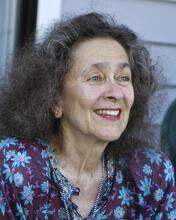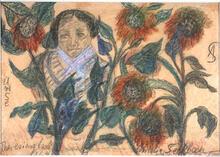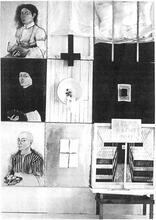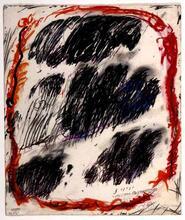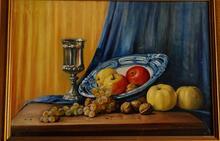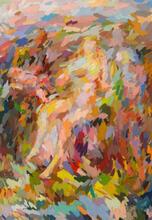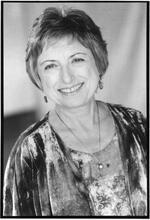Adele Bloch-Bauer
Adele Bloch-Bauer was a wealthy society woman, hostess of a renowned Viennese salon, art patron, and philanthropist. Her famous portraits by Klimt are historical witnesses to the significance of Jewish patronage during the Golden Era of fin-de-siècle Vienna. Among the famous guests in her salon were composer Gustav Mahler, journalist Berta Zuckerkandl, author Stefan Zweig, and socialist Julius Tandler. She supported socialist causes. The restitution cases of the relatives of Adele’s husband Ferdinand Bloch-Bauer – specifically their request to reclaim her portraits by Klimt – made international headlines and were the subject of a famous 2015 film entitled “Woman in Gold.”
“You must gain a feel for quality. When you are able to appreciate the great works of art—of fine art and poetic art—with understanding, you will also be able to evaluate people and judge whether they belong to the worthy or the worthless in quality.” (Czernin, 1999)
Upon becoming acquainted with Adele Bloch-Bauer, a wealthy society woman and hostess of a renowned Viennese Salon at the beginning of the twentieth century, one easily understands why art and life seemed to blend together in her eyes. She has been eternalized by the famous Austrian artist Gustav Klimt (1862–1918) in two majestic portraits, Adele Bloch-Bauer I, 1907 (Neue Galerie New York), Adele Bloch-Bauer II, 1912 (private collection, China), and possibly also in an allegory of the Jewish heroine Judith, 1901 (Austrian Gallery, Vienna). All three paintings are historical witnesses to the significance of Jewish patronage during the Golden Era of fin-de-siècle Vienna.
Early Childhood and Marriage
Adele Bloch-Bauer was born in Vienna on August 9, 1881, the youngest daughter of the seven children of the banker Moritz Bauer (1840–1905) and Jeannette Bauer née Honig (1844–1922). Her father was the general director of the influential Viennese Bank association and the president of the Orient railway company. When she was sixteen her sheltered world was shaken by the early death of her much loved older brother Karl (1871-1897). Presumably it was the trauma of his death that caused her to distance herself from religion. Denied the possibility to study, and feeling unhappy at her parents’ house, on December 19, 1899, she married the sugar industrialist Ferdinand Bloch (1864–1945), who was seventeen years her senior. Her marriage followed the marriage of her sister Therese (1874–1961) to Ferdinand’s brother, doctor of law Gustav Bloch (1862–1938). Adele and Ferdinand had no surviving children. In February 1903, she had a stillborn girl, and in early October 1904 she gave birth to boy called Fritz, who died within a day of his birth. These personal tragic events may have influenced the manner in which artist Klimt chose to eternalize Bloch-Bauer in his two majestic portraits of her, but they have only recently been taken into consideration in art historical research.
Art Patronage and Klimt’s Portraits
In the summer of 1903, Ferdinand Bloch-Bauer asked Klimt to paint his wife’s portrait, intending it as a present for her parents’ anniversary in October. The portrait was exhibited in public only early in 1907. Bloch-Bauer is sitting upright on a golden throne. She appears as the modern icon of a grande dame. The starry golden sky background complements her rich golden robe, which flows with the fervent movement of erotic symbols such as triangles, eggs, and eyes, hinting at a possible intimate relationship between the artist and his model. The choice of abstracted eggs as symbols of fertility may appear as a cruel reference to the stillbirth in 1903, which had occurred before Klimt began the preparatory drawings for the portrait, or perhaps it served as an attempt to symbolically “impregnate” Bloch-Bauer as part of an artistic fantasy to compensate for the stillbirth and the death of her infant son in 1904. He continued working on the painting after her tragic loss. Klimt tried to bring Adele’s characteristic hand gestures into play as an indispensable part of her identity. The hands are clasped expressively together. It may be that the artist aimed to hide a disfigurement of her right hand’s middle finger, about which she was self-conscious, yet Marian Bisanz-Prakken suggests the gesture is sourced from Georg Minne’s expressive and romantic drawing “The Outcasts,” 1898. Both the couple Bloch-Bauer and Klimt shared a fondness for Minne (Bisanz-Prakken, 2016)
Another indication of Klimt’s fanciful imaging of his relationship with Bloch-Bauer can be found in his earlier 1901 portrayal of “Judith” as a femme fatale, in which Adele is recognized through facial features and a flashy neckband, similar to the neckband in her later portrait. A contemporary critic identified the model for “Judith” as a contemporary Jewish woman. Both Judith and Bloch-Bauer are “beheaded” by the neckband. In this manner Klimt draws attention to the mythological and real woman’s expression filled with expectation, Judith’s bold and sexual and Bloch-Bauer’s thoughtful and romantic. Their “beheading” further provokes a fantasy of “castration,” suggesting also their victimization. In a second portrait, dating from 1912, Adele is standing facing the viewer, wearing a fashionable dress. Behind her, in the upper part of the colorful background, is a Far Eastern scenario of galloping horse riders returning to their village. The Far East scene may be an allusion to the Jewish woman sitter as belonging to the Oriental, or “exotic,” cultural realm and confirming her position as the “Other.”
Rumors about an affair between Bloch-Bauer and Klimt were never confirmed, yet it is possible to assume that her arresting portrayal is propelled by the artist’s erotic allusions to his sitter. In addition to the two portraits of Adele, the Bloch-Bauers also purchased four landscapes and numerous drawings by Klimt. They were both proud of their art collection, which included paintings by famous Austrian artists such as Ferdinand Georg Waldmüller (1793–1865), Rudolf von Alt (1812–1905), and Emil Jakob Schindler (1842–1892), as well as a valuable collection of Viennese classical porcelain. In 1919, after the couple moved to their new grand palace opposite the Academy of Fine Arts in Vienna, Adele erected a shrine dedicated to Klimt in her chambers. His paintings decorated the walls, while his photo stood on a side table.
Salon Hostess and a Viennese Legacy
Adele Bloch-Bauer gave the impression of being a refined mixture of romantic personae: sick and fragile on the one hand and a self-conscious and proud salon lady on the other. Indeed, Bloch-Bauer may have found her role models in romantic literature. She studied German, French, and English classical literature on her own initiative. She was delicate, tended to illness, and gave the impression of someone who suffered. Her narrow face appeared elegant and intellectual as well as arrogant and smug. She was often caught in the unladylike modern habit of smoking. Among the prominent guests in her salon were the composers Gustav Mahler (1860–1911) and Richard Strauss (1864–1949), Alma Mahler-Werfel (1879–1964), journalist and patron of the arts and theater Berta Zuckerkandl (1864-1945), the authors Stefan Zweig (1881–1942) and Jakob Wassermann (1873–1934), artists from the circle of Gustav Klimt, actors from the Burgtheater, and, after WWI, the Socialists Karl Renner (1870–1950) and Julius Tandler (1869–1936).
In 1917, both Bloch couples added the wives’ maiden name to the family name: Bloch-Bauer. In 1918, after the fall of the Austrian-Hungarian monarchy, Ferdinand and Adele requested Czech citizenship with the address of their castle “Schloß Jungfern” near Prague. However, their home base remained in Vienna, where Adele continued her role as a salon lady. Julius Tandler, a prominent guest, became her physician, and it was possibly due to his influence that she began to support Socialist causes.
On January 24, 1925, Bloch-Bauer died suddenly of meningitis, in Vienna. After her death, the “Klimt Hall” was turned into a memorial room for her. In her will, she bequeathed her money to many charities, among them The Society of Children’s Friends. She donated her library to the Viennese Public and Workers’ Library. She also requested that her husband donate Klimt’s paintings to the Austrian Gallery after his death. Ferdinand Bloch-Bauer had been a founding member and sponsor of the Österreichische Staatsgalerieverein (Austrian State Gallery Association, 1912), and had continued to support this initiative as a benefactor when it was renamed as the Society of Friends of Austrian Museums in 1921. In 1938, following the annexation of Austria to Nazi Germany, the paintings and his large art collections were aryanized (their property was robbed and transferred or sold to “Aryan” ownership). Ferdinand fled to Czechoslovakia and later continued onto Zurich, where he died shortly after the end of the war. He is buried beside his wife in Vienna.
Family Restitution Claims – “Woman in Gold”
Ferdinand’s last request to recover the Klimt paintings and other artworks from their exquisite collection was not fulfilled in his lifetime. Maria Altmann, Adele’s California-based niece and one of Ferdinand’s heirs, sued the Republic of Austria in August 2000, demanding that the Klimt paintings be returned to their rightful heirs. In May 2005, the Republic of Austria and Maria Altmann of Los Angeles agreed in a U.S. District Court to end their litigation regarding five Gustav Klimt paintings and to submit the dispute to binding arbitration in Austria. In January 2006, the arbitration resulted in the award of the paintings to Maria Altmann. Soon afterwards, she had them displayed at the Los Angeles County Museum of Art. In June 2006, the portrait entitled Adele Bloch-Bauer I was purchased for the Neue Galerie in Manhattan by Ronald Lauder for the record sum of $135 million. In April 2005, New York District Judge Edward Korman awarded Altmann and several relatives $21.8 million from the Swiss Banks Fund. This vast sum was granted because a Swiss bank, which Ferdinand Bloch-Bauer appointed as trustee of his sugar refinery in 1938, had handed the business to an industrialist with Nazi ties in 1939.
Two documentaries—“Stealing Klimt,” by Jane Chablani (2006) and “Adele’s Wish,” by Terence Turner (2008)—describe the Bloch-Bauer relatives’ historical process of reclaiming the Klimt paintings. In 2015, a biographical film drama titled “Woman in Gold” featured Altmann’s legal case to recover the Klimt paintings, together with her lawyer Randy Schoenberg (born 1966), grandson of the Austrian composer Arnold Schönberg (1874-1951). Altmann was played by the actress Helen Mirren. The film’s historical accuracy regarding the case for restitution was criticized, specifically its undermining of the key role of Austrian journalist and publisher Hubertus Czernin (1956-2006) in the case. It was Czernin who found the relevant historical documents and informed the family about them (Kronsteiner, 2015). Nonetheless, the film has successfully drawn world-wide attention to the critical role of Jewish patrons in shaping Viennese modernism, and, further, to the historical injustice in handling their restitution claims.
Altmann, Maria. “Aunt Adele. Interview with Renée Price.” In Gustav Klimt. The Ronald S. Lauder Collection and Serge Sabarsky Collections, edited by Renée Price, 90-94. New York: Neue Galerie, 2007.
Beller, Steven. “Dis-Oriented Jews? Orientalism, Assimilation, and Modernism in Vienna 1900.” In Design Dialogue: Jews, Culture and Viennese Modernism, edited by Elana Shapira. Vienna: Böhlau Verlag, 2018.
Bisanz-Prakken, Marian. “Klimt’s Studies for Portrait of Adele Bloch-Bauer I.” In Klimt and the Women of Vienna’s Golden Age 1900-1918, edited by Tobias G. Natter, 80-95. Munich, London, New York: Prestel, 2016.
Czernin, Hubertus. Die Fälschung. Der Fall Bloch-Bauer. Vienna: Czernin, 1999.
Grimberg, Salomon. “Adele. Private love and public betrayal in turn-of-the-century Vienna: a tale hidden in the paintings of Gustav Klimt.” Art & Antiques, Summer (1986): 70–74, 90.
Kronsteiner, Olga. “’Die Frau in Gold’: Faktentreue ist eine Schlechte Dramaturgin,” in Der Standard, May 29, 2015 (https://www.derstandard.at/story/2000016549464/die-frau-in-gold-faktentreue-ist-eine-schlechte-dramaturgin. Accessed 20.1.2020.)
Lillie, Sophie and Georg Gaugusch. Portrait of Adele Bloch-Bauer., New York: Neue Galerie, 2009.
Lillie, Sophie. “The Golden Age of Klimt. The Artist’s Great Patrons; Lederer, Zuckerkandl, and Bloch-Bauer.” In Gustav Klimt. The Ronald S. Lauder Collection and Serge Sabarsky Collections, edited byn Renée Price, 54-89. New York: Neue Galerie, 2007.
Natter, Tobias G. and Gerbert Frodl, ed. Klimt und die Frauen. Vienna: DuMont Reiseverlag, Ostfildern, 2003.
Natter, Tobias G. Klimt and the Women of Vienna’s Golden Age 1900-1918. Munich, London, New York: Prestel, 2016.
O’Connor, Anne-Marie. The Lady in Gold: The Extraordinary Tale of Gustav Klimt's Masterpiece, Portrait of Adele Bloch-Bauer. New York: Vintage, 2012.
Personal correspondence with Maria Altmann, March 26, April 2, June 22, 2002.
Shapira, Elana. “Imaging the Jew: A Clash of Civilisations.” In Facing the Modern: The Portrait in Vienna 1900. National Gallery, London: Yale University Press, 2013.


